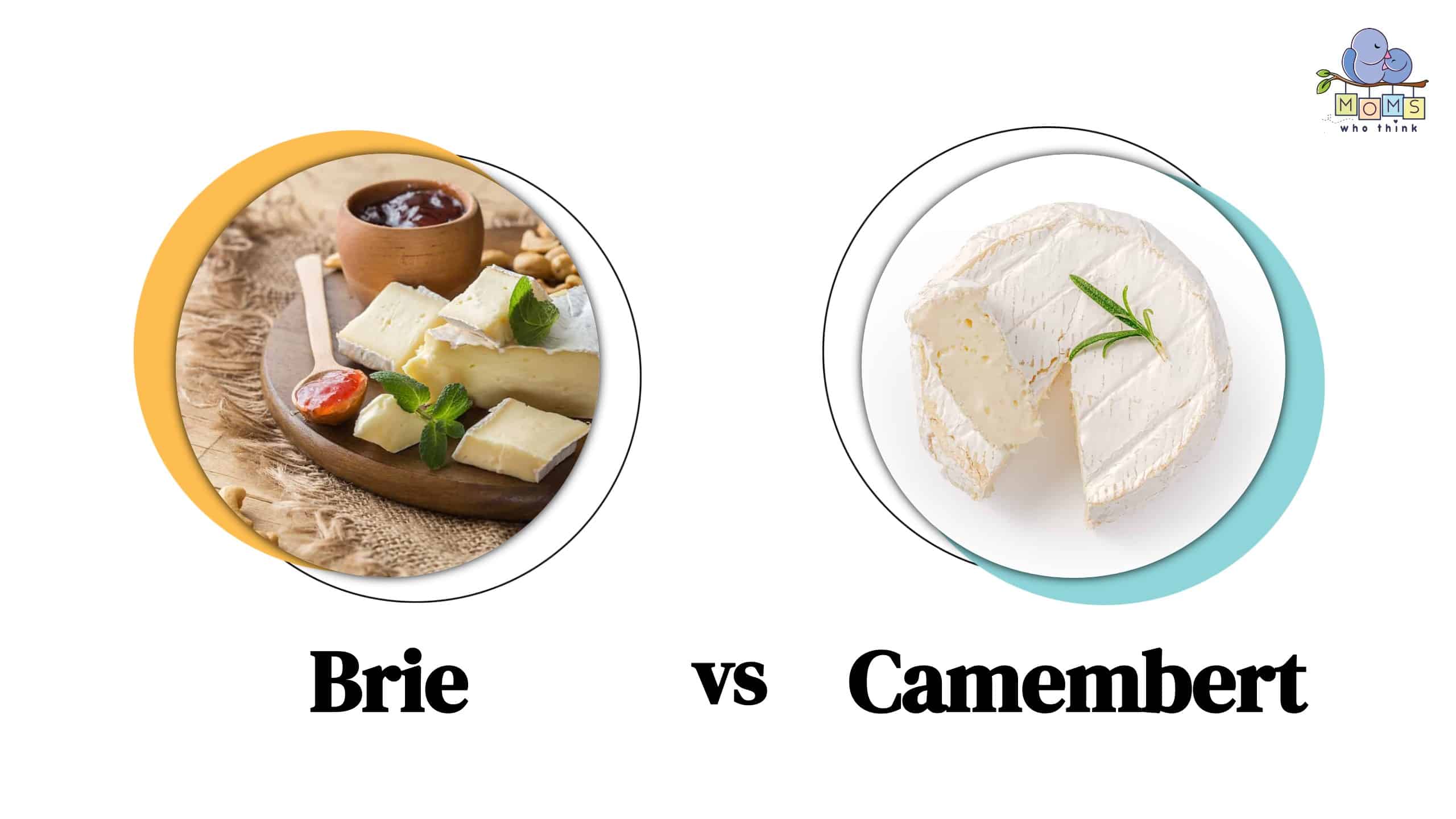Camembert and Brie are two of the most famous French cheeses in the world, but what’s the difference between them?
At first, it may be challenging to tell apart Camembert and Brie. Both are soft-ripened cows' milk cheese with a white bloomy rind. But some distinct characteristics set these two kinds of cheese apart. This article looks at what makes these two cheeses so different yet so loved!
Are Camembert Cheese and Brie Cheese The Same Thing?
Camembert and Brie are among the most popular cheeses in the world. Both have a rich, creamy texture, making them ideal for various recipes. But what distinguishes these two gooey treats from one another? Are Camembert and Brie interchangeable?
Both yes and no are ideal answers to this question. Although Brie and Camembert are similar, they also differ in a few critical aspects in many ways.
Both cheeses have a delicate, creamy texture and a thin film of delectable white mold on the outside. They are both prepared from cow's milk. They both have a moderate, nutty, and slightly earthy flavor characteristic in common. There are, however, critical differences between these two cheeses.
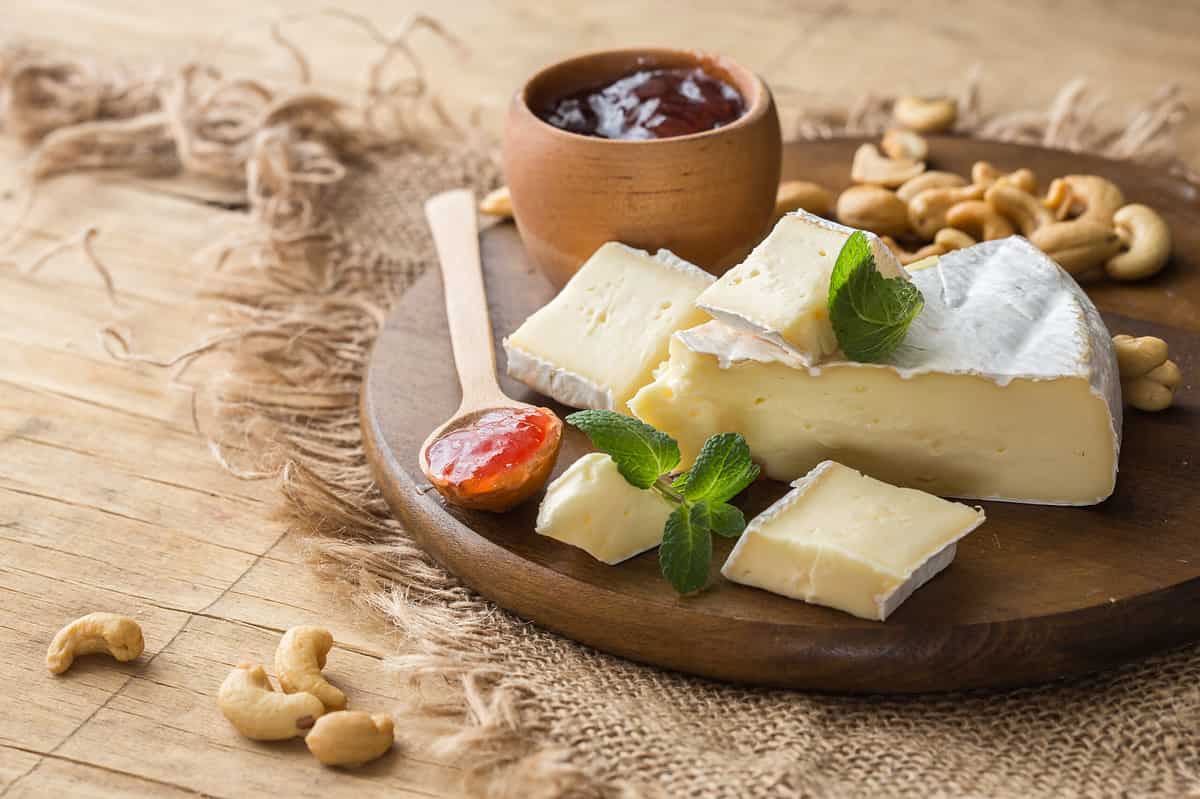
A delicious block of Brie cheese makes on a wooden board makes life a little bit better!
©Sokor Space/Shutterstock.com
Camembert vs Brie Cheese: The Main Differences Explained
The most important difference between Camembert and Brie is their flavor, with Camembert having a stronger, more intense flavor while Brie has a mild, buttery flavor. Brie's texture is creamier whereas Camembert is a bit runnier.
Compared to Brie, Camembert is produced in significantly smaller wheels, usually just 6 to 8 inches (15 – 20 cm) across. In addition, Camembert has a layer of soft white mold on the outside and a texture that is softer and creamier than Brie.
- The must-have convenient reference guide for every home cook!
- Includes more than 8,000 substitutions for ingredients, cookware, and techniques.
- Save time and money on by avoiding trips to grab that "missing" ingredient you don't really need.
Contrarily, Brie is produced in larger wheels and has a softer flavor than Camembert. Additionally, it has a more robust texture, and its white exterior mold is typically less evident than Camembert's.
Despite possible similarities, it's crucial to remember that Brie and Camembert are two entirely different kinds of cheese, each with its distinct flavor.
What is Camembert Cheese?
Some of the most loved delicacies in the world were inspired by the legendary French treat known as Camembert cheese. Camembert is a soft, creamy cow's milk cheese with a unique flavor that dates back to the 18th century in Normandy, France.
It continues to be appreciated for its silky, velvety texture and its earthy, slightly mushroom-like flavor as one of the most ancient and well-liked cheeses. Additionally, it is a common ingredient in French cuisine, where it may be found in everything from sandwiches and appetizers to decadent desserts.
What makes Camembert so unique, then? To begin with, the ingredients are straightforward: cow's milk, rennet, salt, and a little cream. But the utilization of heat-treated cultures during manufacture sets this cheese apart from its rivals.
Camembert stands out from other cheeses due to a few distinctive qualities and its unique flavor. The inside has a light yellow tint with a little bloomy surface, while the rind is velvety, soft, and white. The cheese will have a strong scent and feel slightly springy when fully mature.
There are a few vital considerations while serving Camembert. You can serve it at an average temperature, enhancing the cheese's flavor and texture. Remove it from the refrigerator and let it sit for about an hour or two before serving for optimal results. Furthermore, apples and pears, as well as crusty slices of bread, go nicely with Camembert.
Camembert cheese is a genuinely special treat.
What is Brie Cheese?
Brie cheese is an all-time favorite among cheese fans, thanks to its creamy, rich flavor and velvety texture, it is a mouth-watering delicacy. This artisanal cheese has been manufactured for centuries in France, where it was invented. What else is there to know about Brie cheese, though?
Brie cheese has been around since the eighth century and comes from the Seine-et-Marne region of what was once known as Île-de-France. It is believed that local monks from this region developed it at first and then shared their expertise and recipes with nearby farmers. Brie cheese gained popularity over time and has since gone beyond Europe.

Brie cheese is a popular choice among cheese lovers worldwide.
©Stolyevych Yuliya/Shutterstock.com
There are various types of Brie cheese, depending on where it is made. Other types, like Boursault, have a deeper flavor and smoother texture while maintaining the white edible peel and mild flavor of traditional French Brie. Popular Brie de Meaux has been given AOC (Protected Designation of Origin) status, which requires that it only be produced in that location to be formally referred to as “Brie de Meaux.”
Brie cheese has a delicate, creamy flavor with frequent traces of butter or mushrooms. Although it typically has a pleasant aftertaste, it can also be slightly acidic. Depending on how the cheese has aged, the rind's flavor can also change.
Generally speaking, Brie cheese with a white bloomy rind will be more potent and mushroom-like than cheese with yellow skin.
Brie cheese tastes best when served at room temperature because it allows all its flavors to develop fully. It can be eaten melted over foods like toast or potatoes or with crackers or fruit. Brie cheese should be kept in the refrigerator and consumed immediately when storing it.
Can You Substitute Camembert Cheese For Brie Cheese?
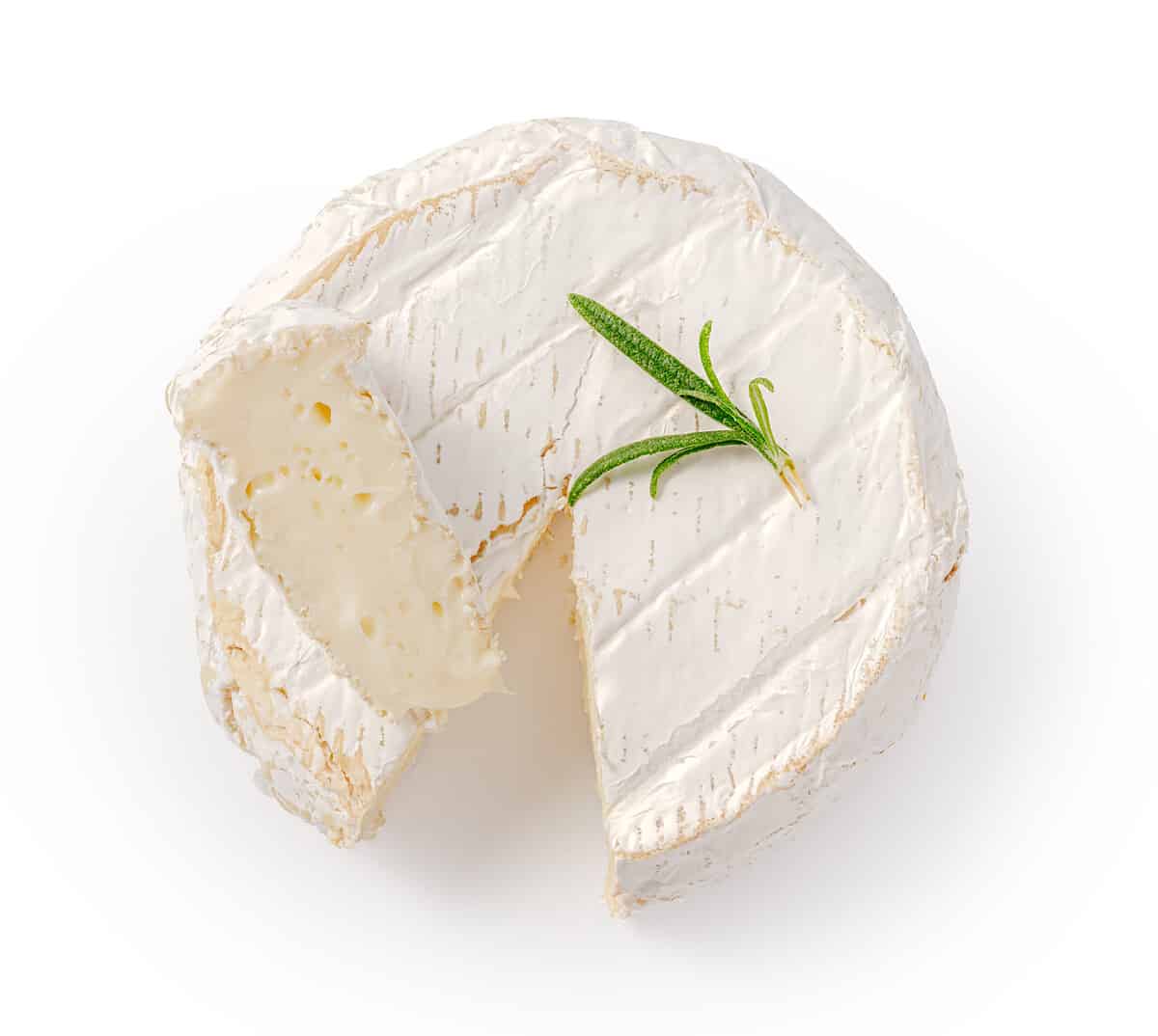
Fresh Camembert cheese
©Tanya Sid/Shutterstock.com
These two soft cheese varieties, Camembert and Brie, share many similarities but differ significantly. Both have a moderate flavor, a creamy texture, and faint earthy undertones. However, despite their many similarities, they also have individual qualities that make them stand apart, such as their particular tastes and appearance.
So, is it possible to swap one for the other? The answer is that Camembert cheese can be used instead of Brie cheese, but there are some significant distinctions to consider.
Although the flavor qualities of Camembert and Brie are similar, Camembert and Brie differ in that Camembert has a considerably stronger flavor. This means that if Camembert is substituted for Brie, it will overpower it. When replacing Camembert for Brie, keep in mind that it has a thicker rind and is frequently supplied in smaller spherical packages.
Additionally, due to its increased moisture level, Camembert cheese tends to be more pungent than Brie. This means that it might take longer to cook or not work in recipes that ask for a strong flavor, like French onion soup. When changing one for the other, it is also essential to remember that Camembert and Brie Cheese have very different textures.
Although Camembert cheese can be used instead of Brie cheese, it's crucial to consider these distinctions. To get the desired effects, those wishing to substitute should view both cheeses' textures and flavor profiles.
Best Substitutes For Camembert Cheese
In some places, it may be pretty challenging to find Camembert cheese, or the price may be prohibitive. Fortunately, some excellent substitutes offer Camembert cheese's characteristics and flavors in a very similar way. The top three Camembert cheese alternatives are listed below.
One of the best and most well-liked Camembert cheese alternatives is Brie. Its texture is comparable, with a creamy core and a little harder outer crust. Like Brie, it has a mellow flavor with undertones of nuttiness and dirt. Camembert cheese can be substituted with Brie in quiches, casseroles, and other baked goods.

Camembert makes a great addition to a leafy green salad.
©Jacek Chabraszewski/Shutterstock.com
Taleggio is an excellent alternative to Camembert cheese. This semi-soft Italian cheese has a strong acidic, and slightly salty flavor. Its creamy texture is comparable to Camembert cheese's, but its flavor is more intense. Taleggio is ideal for blending into sauces or incorporating into baked goods.
Finally, Fontina is yet another great Camembert cheese replacement. When melted, this cow's milk cheese from Italy has a delicate, nutty flavor and a gooey consistency. Fontina cheese has a more robust flavor than Camembert cheese, but it still gives gratins, risottos, and polenta an extraordinary depth.
If you can't get Camembert cheese, these three choices are excellent alternatives. Similar in taste and texture to Camembert cheese, Brie, Taleggio, and Fontina are perfect for use in baked products, sauces, pastries, and plain eating.
Best Substitutes For Brie Cheese
Brie cheese is a rich, creamy cheese that has long been a favorite among cheese enthusiasts. It adds flavor to any dish and goes well with various foods thanks to its mild flavor. Unfortunately, Brie can be pricey and difficult to find at the neighborhood grocery store.
There are a few delectable Brie alternatives that you may use instead of the original and save time and money. These flavorful substitutes, which range from soft blue cheese to creamy goat cheese, will give your dishes the same gourmet flavor without breaking the wallet.
- The must-have convenient reference guide for every home cook!
- Includes more than 8,000 substitutions for ingredients, cookware, and techniques.
- Save time and money on by avoiding trips to grab that "missing" ingredient you don't really need.
Three-milk bocconcini is an excellent alternative to Brie cheese. Cow, goat, and sheep's milk are usually used to make this creamy Italian cheese. Thanks to its mild flavor and silky texture, it is an excellent substitute for Brie in any recipe. Burrata, another Italian cheese with a more assertive flavor than Brie, is a fantastic alternative. Cream and curd are blended to create this cheese's semi-solid texture.
Try blue cheese or Camembert if you want something a little bit spicy. Both have potent flavors and provide the same creamy texture as Brie, making them excellent replacements. Blue cheese is matured to perfection and emits a powerful but enticing aroma, while Camembert is a soft French cheese with a deep, earthy flavor.
Numerous varieties of goat cheese can also be found. Goat cheese can be substituted for Brie to give your dishes a distinctive flavor, and types range from creamy chevre to pungent feta. Try using goat gouda or manchego as an even riskier substitute. These cheeses have a deeper flavor than classic Brie while retaining the same creaminess and texture.
Finally, you can always use cream cheese or ricotta if you don't have any of these alternatives at home. These cheeses make excellent Brie substitutes since they are known to be mild in flavor and possess a smooth, creamy texture.
Camembert vs. Brie Nutrition: Which is Healthier (Calories, Fats, Proteins)
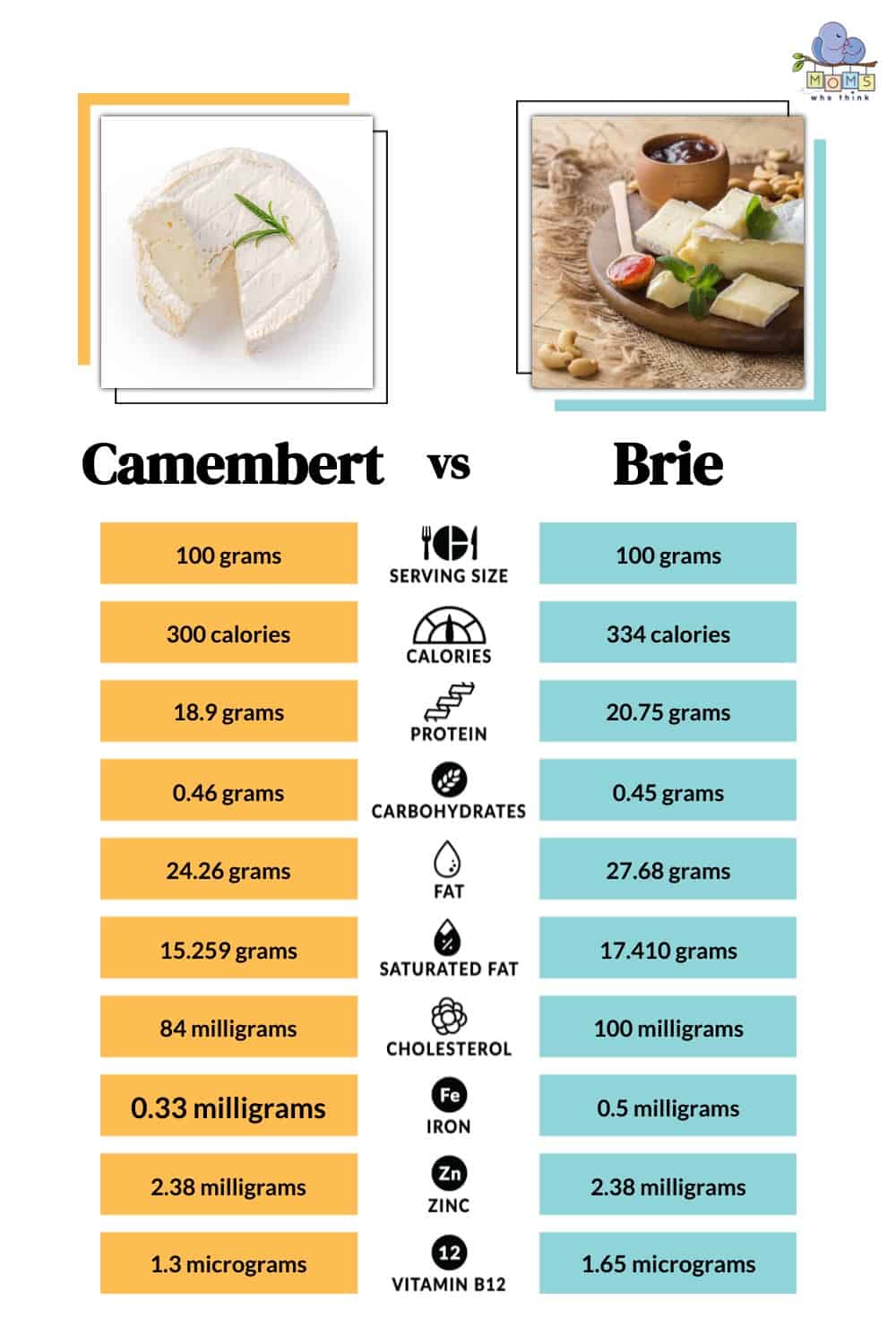
As you can imagine, the nutritional values of Camembert and Brie are very comparable. Overall, Camembert is slightly more healthy on account of fewer calories per serving. Brie has higher fat, protein, and cholesterol. It's also a bit richer in vitamins like B12 and iron.
How To Make Camembert Cheese At Home
A few simple ingredients and a bit of patience are what you need to make Camembert cheese. The process requires items such as a stainless-steel kettle, a timber spoon, butter muslin (also known as cheese material), wax paper, and two shallow salting dishes.
The ingredients are raw milk, rennet capsules or liquid, calcium chloride (if needed), and a teaspoon of mesophilic starter culture.
First, heat the milk in a pot over medium-low heat till it reaches a temperature of 88°F/31°C.
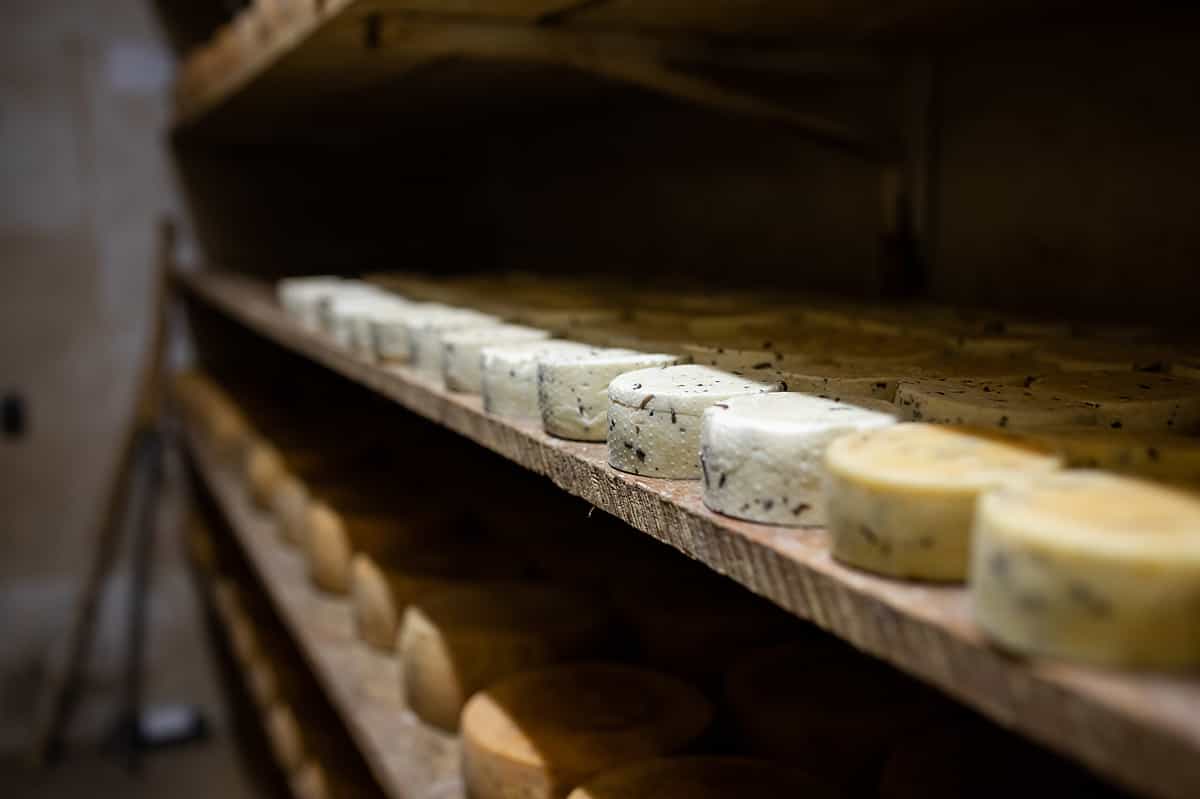
After making your cheese, place them to mature in the basement or fridge.
©Wirestock Creators/Shutterstock.com
Next, add the mesophilic starter culture to the milk as quickly because it reaches this temperature and needs to be thoroughly stirred.
After stirring:
- Place a lid on the pot and allow it to sit for 45 minutes until it reaches room temperature (77°F/25°C).
- At this temperature, dissolve rennet capsules in a small cup with a half teaspoon of cold water, or add two drops of liquid rennet.
- Stir the mixture fully and add it to your milk, stirring for approximately 10 minutes until it has completely mixed in.
Check to see if your cheese has settled after 45 minutes. Using a spoon or knife, make a shallow cut on the surface of the milk, then watch it as it rises up.
You can move to the next step if it’s all set.
Once your cheese has hardened, cut it into 1-inch rectangular cubes and set them apart for 10 mins. After the ten minutes are up, gently separate the cubes with a wooden spoon and stir for an extra 5 minutes.
Pour the liquid that separates from the curd, and then put the curds in a container covered with cheesecloth. Spread a little salt over the cheese after placing it on a shallow dish. When the bulk of the whey has been extracted, cowl with wax paper, press lightly for 15 mins, flipping after every 5 minutes.
The cheese must be free of its wrap and placed on a dish gently salted and formed into a disc. The cheese should be covered again with wax paper and allowed to dry for three days at room temperature (77°F/25°C).
After drying the cheese, you can age your Camembert cheese for about two weeks in a refrigerator or basement until it's ready for consumption.
How To Make Brie Cheese At Home
For centuries, cheese-makers have been crafting delicious and creamy Brie. You can now make this French traditional cheese yourself at home with a few easy components – no unique gadget required!
Follow these clear instructions, and you’ll have your own homemade Brie in no time!
Ingredients
To make Brie at home, you’ll need 2 gallons of pasteurized whole milk, ½ teaspoon of mesophilic starter subculture, ¼ teaspoon of liquid rennet, ¼ cup of non-chlorinated water, sea salt for flavor, and a few cheesecloths.
Instructions
1. Begin by heating the milk to a temperature of 86-88⁰F. Stir the starter culture into the warm milk until it is calmly dispensed.
2. Mix the rennet and water in a separate bowl and stir until evenly combined. Slowly add this combination to the milk and stir constantly for 1-2 mins.
3. Cover the pot and allow it to sit undisturbed at a normal temperature of 86⁰F for about 45-60 minutes or until the curds have settled.
4. Use a knife and cut the curd into pieces that are more or less ¾ inches in size. Stir gently and allow the curds to rest for 10 mins.
5. Heat the curds slowly to a temperature of 98-100⁰F, stirring during the process. Once it reaches 104-106⁰F, put off the pot from the heat and allow it to sit undisturbed for 15 minutes while stirring now and again.
6. Once the curds have reached the desired firmness, drain off the whey. Place a cheesecloth-lined colander or strainer over a pot and let the curds into it. Let drain for approximately 15 mins.
7. Gently press the curds with your palms to form a circular shape. Cover the mold with cheesecloth and let it sit at room temperature for 24 hours.
8. Remove the Brie from the mold and sprinkle it with sea salt. Place it on a cheese board and allow it to sit for eight-10 days, turning over the Brie every 2-3 days.
A Quick Comparison of Camembert vs. Brie
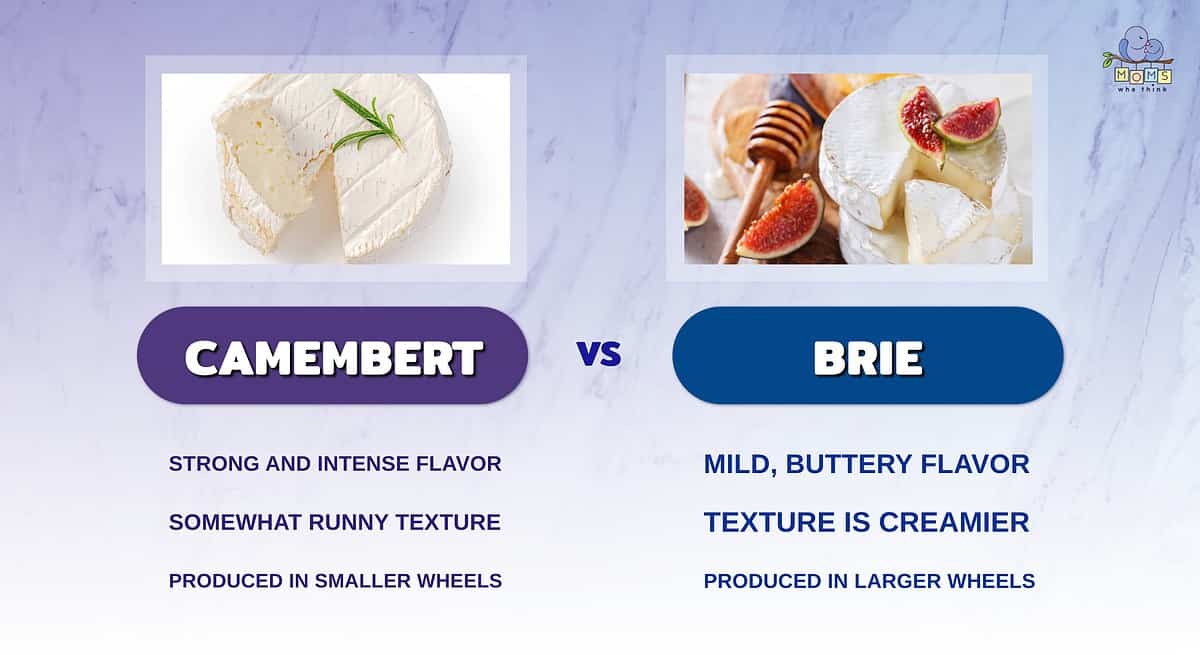
Camembert has a strong and intense flavor, while brie's flavor is much milder and more buttery. Some people may feel the taste of camembert is too strong; if you fall under this category, consider giving brie a try. The texture of brie is also creamier than camembert, which some may find makes it easy to spread on crackers and bread. Camembert is generally produced in smaller wheels compared to brie. Regardless of which cheese you pick, you're sure to have a delicious experience!
Try this ham, brie, and tomato frittata recipe:
Print
Ham, Brie, and Tomato Frittata
- Total Time: 15 minutes
Ingredients
- 2 tablespoons butter or margarine
- 8 ounces cubed cooked ham
- 1 small yellow summer squash, chopped
- 6 eggs, lightly beaten
- Salt and black pepper
- 1/2 of an 8-ounce round Brie cheese, chopped
- 1 large tomato, seeded and chopped
Instructions
- Preheat broiler. In a large broiler-proof skillet melt butter over medium heat.
- Add ham and squash to butter; cook for 2 minutes.
- In a medium bowl combine eggs, ½ teaspoon salt, and ¼ teaspoon black pepper.
- Add egg mixture to skillet; cook for 1 minute.
- Sprinkle with cheese and half of the tomato.
- As the mixture sets, run a spatula around edge of skillet, lifting egg mixture so uncooked portion flows underneath. Continue until egg mixture is almost set.
- Broil 4 to 5 inches away from heat about 1 minute or until top appears set. Sprinkle with remaining tomato. Cut into wedges.
- Prep Time: 5 minutes
- Cook Time: 10 minutes
